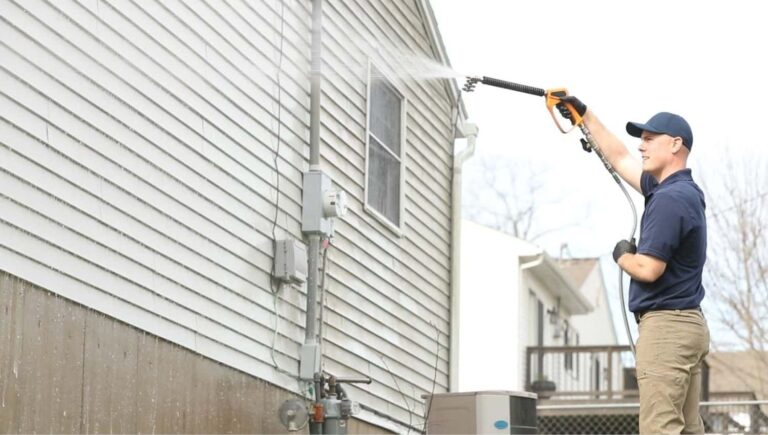Smart Design Choices That Boost Home Comfort and Resale Value
The Ultimate Guide to Preparing Your Home for Interior Painting
That fresh coat of paint can transform a room from drab to dazzling, but the secret to a showstopping finish lies in what happens before the roller even touches the wall. Skipping preparation is the most common DIY painting mistake, leading to peeling, uneven coverage, and wasted time and money. Whether you’re refreshing a single room or tackling your entire home, understanding proper prep work is non-negotiable. This guide dives deep into the essential steps professional painters swear by, empowering homeowners and DIY enthusiasts to achieve flawless, long-lasting results. Investing time in meticulous preparation isn’t just about aesthetics – it protects your surfaces, ensures paint adhesion, and ultimately saves you from costly do-overs down the line.
Clearing the Stage: Protecting Belongings and Surfaces
Your first move is creating a clean, safe workspace. Remove all furniture, artwork, and decor from the room whenever possible. For bulky items, group them in the center of the room and cover them completely with breathable plastic drop cloths – avoid canvas or fabric here, as spilled paint can seep through. Secure the cloths with painter’s tape. Next, focus on the floors. Canvas drop cloths are excellent for high-traffic areas due to their non-slip nature, while plastic sheeting works well for broad coverage. Overlap sheets by at least 12 inches and tape seams securely to baseboards using painter’s tape. Don’t forget to cover light fixtures, vents, and switches with plastic bags or specialized covers. Protect door hardware and windowsills with tape and plastic. This upfront effort prevents frustrating cleanup and accidental damage.
Wall and Ceiling Repair: Creating a Flawless Canvas
Paint magnifies imperfections. Thoroughly inspect walls and ceilings under bright light, marking flaws with light pencil circles. Address these common issues:
- Nail Pops & Small Holes: Drive protruding nails slightly below the surface with a nail set. Fill both the nail hole and the resulting dimple with lightweight spackle using a putty knife. For screw holes or minor dings, apply spackle smoothly, slightly overfilling to account for shrinkage.
- Cracks: Widen hairline cracks slightly with a utility knife to create a “V” groove for better compound adhesion. Fill with a flexible patching compound or paintable caulk for minor cracks, or use joint compound for larger gaps.
- Dents & Gouges: Clean out loose debris. Apply setting-type joint compound (like 20-minute mud) for deeper repairs, building it up in thin layers, allowing each to dry completely before sanding flush with the surrounding surface.
Once repairs dry, sand the entire wall and ceiling surfaces starting with 120-grit sandpaper for repairs, then move to 150-180 grit for overall smoothing. Always sand repaired spots until you can’t feel the edge when running your hand over them. Sanding creates a slightly rough “tooth” crucial for paint adhesion. Vacuum thoroughly afterward, followed by wiping with a tack cloth to remove all dust.
Surface Cleaning: Ensuring Paint Adhesion
Paint won’t stick to dirt, grease, or grime. Kitchen walls near stoves often have grease buildup, bathrooms battle soap scum and moisture residue, and living areas accumulate dust and fingerprints. Create a simple, effective cleaning solution:
- Mix 1 cup TSP (Tri-Sodium Phosphate) substitute or 1/2 cup mild dish soap per gallon of warm water.
- Wear gloves and eye protection.
- Use a large cellulose sponge or microfiber cloth, wringing it out well so it’s damp, not dripping.
- Wash walls systematically from top to bottom in small sections (4×4 feet). Pay extra attention to areas around light switches, door handles, and baseboards.
- Rinse each section immediately with a clean sponge dipped in clear water and wrung out thoroughly.
- Allow walls to dry completely – typically 24 hours – before proceeding. Painting over damp walls traps moisture and causes blistering.
Taping, Caulking, and Priming: The Final Prep Steps
Precision is key at this stage. Use high-quality painter’s tape (like delicate surface or multi-surface tape) for clean lines:
- Apply tape to trim (baseboards, crown molding, window/door casings), ensuring firm adhesion by running a putty knife or credit card along the edge.
- Tape around windows and doors. Avoid stretching the tape.
- For ceilings, tape along the top edge of the wall if not painting the ceiling itself.
Next, inspect gaps between trim and walls or at inside corners. Apply a thin, continuous bead of high-quality, paintable acrylic latex caulk. Smooth the bead immediately with a damp finger or caulking tool for an invisible seal. Priming is non-negotiable for:
- All repaired spots (spackle/compound absorbs paint differently).
- Bare drywall or plaster.
- Stained areas or walls with strong previous colors (use tinted primer).
- Surfaces changing from oil-based to latex paint.
Use a high-quality primer suited to your surface (drywall, stain-blocking, adhesion-promoting). Apply evenly with a roller or brush. Primer seals the surface, promotes uniform topcoat color, and enhances durability.
Selecting Your Tools and Paint for Success
Don’t sabotage your prep work with poor-quality materials. Invest in these essentials:
- Brushes: 2-2.5 inch angled sash brush (cutting in, trim), 3-4 inch flat wall brush (small areas). Choose synthetic bristles (nylon/polyester) for latex paint.
- Rollers: Choose the right nap thickness: 3/8″ nap for smooth walls, 1/2″ for light texture, 3/4″ for heavy texture. Use sturdy metal roller frames.
- Roller Trays & Liners: Disposable liners save cleanup time.
- Extension Pole: Essential for ceilings and tall walls.
- Paint: Select interior paint based on room function. Eggshell or satin offer subtle sheen and durability for most living areas. Semi-gloss or gloss are ideal for trim, doors, and high-moisture areas like bathrooms (easier to clean). Opt for reputable mid-tier or premium paints – they offer better coverage, washability, and longevity than budget options. Calculate your square footage (length x height of walls, subtract windows/doors) and buy slightly more than estimated to ensure color consistency.
Conclusion: Your Blueprint for Painting Perfection
Thorough preparation is the unsung hero of a stunning, durable interior paint job. By diligently clearing and protecting the space, meticulously repairing imperfections, deeply cleaning surfaces, precisely taping and caulking, applying the right primer, and choosing quality tools and paint, you lay the foundation for success. Rushing or cutting corners during prep inevitably leads to visible flaws, premature wear, and the frustration of rework. Remember, the time invested upfront pays dividends in both the immediate visual impact and the years of enjoyment your refreshed space provides. Embrace the process – arm yourself with patience, follow these steps, and approach your painting project with confidence. The beautiful, professional-quality results you achieve will be a testament to the power of preparation. Happy painting!







